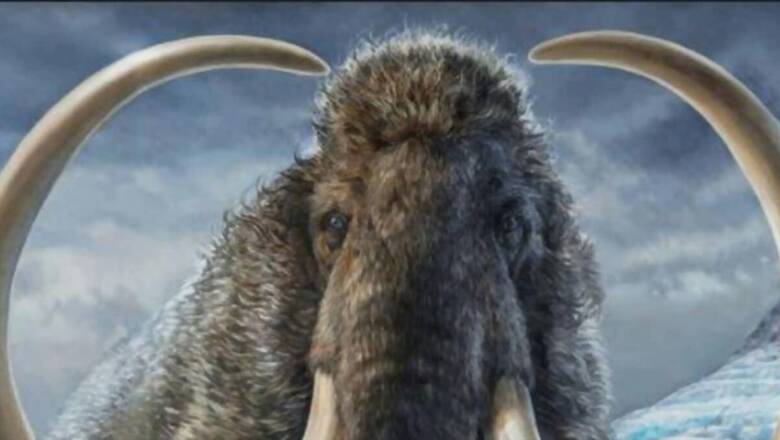
views
A recent study has unveiled a fascinating and unexpected theory about the extinction of woolly mammoths. Pollen allergies might have been instrumental in causing their extinction. This research, available in Earth History and Biodiversity, argues that something as simple as the presence of increased pollen after the last Ice Age could have caused allergic reactions that led to the extinction of these prehistoric giants.
According to the authors of this research, the high pollen concentrations may have become a major problem for woolly mammoths. In particular, they suggest that perhaps allergies could have made the Nasal passages blocked thus reducing not only the animals’ smelling abilities.
This olfactory impairment would have been detrimental for several reasons:
Mammoths mostly communicated through the sense of smell, hence it was very developed in the animals. Pheromones are commonly used by animals as chemicals for communication ,especially in the breeding season. If mammoths could not detect these chemical signals due to coming into contact with the allergens this would cause problems in searching for a mate.
A loss of this sense would also significantly reduce their potential of finding food and sensing potential predators, making their existence even more perilous.
In the latest study, the researchers mentioned that this allergy-related impairment outlines another evolutionary tool that leads to extinction during climate shifts. When the climate became warmer and the types of vegetation changed, it greatly stimulated pollen production. The obtained allergic reactions could have developed a feedback mechanism that would have further aggravated the decrease in mammoth populations.
To provide evidence to support their hypothesis, the research team dissected samples of the frozen tissue from the remains of the ancient mammalian creatures. They found bits of antibodies or organic residues similar to pollen sediments which raises questions that these early creatures really did experience allergic reactions.
Woolly mammoth is an extinct species that lived in the Pleistocene era and its population dropped around 10,000 years ago in times of great climatic change. Conventional theories attributing their extinction hinge on aspects such as hunting by people and the availability of habitats due to the changes in the environment. Yet, this new view suggests that climate fluctuations affect the mere biology of mammoths to dictate their destiny.
Climate and vegetation changed dramatically when the last ice age came to an end. The new plant species which grew as the temperatures went up produced more pollen than before. This change not only affected the ecosystems of the planet but also brought possible health issues for large herbivorous animals like the woolly mammoth.
But within scientific circles, this hypothesis is rather popular, although, some scientists have negative attitudes toward it. Vincent Lynch, an evolutionary biologist who specializes in extinction events, concedes that there is a body of evidence that late mammoth populations have systematically less efficient olfactory receptors but questions whether allergies were the main cause of the extinction of their species.
Lynch notes that there is a need for a broader approach that examines other aspects of the environment as well as human activities. He insists that despite the fact that allergies might have played a role in the decline, they are definitely not the only factor.
“This idea seems pretty far out there and I’m not sure how you would ever prove it,” he added.



















Comments
0 comment